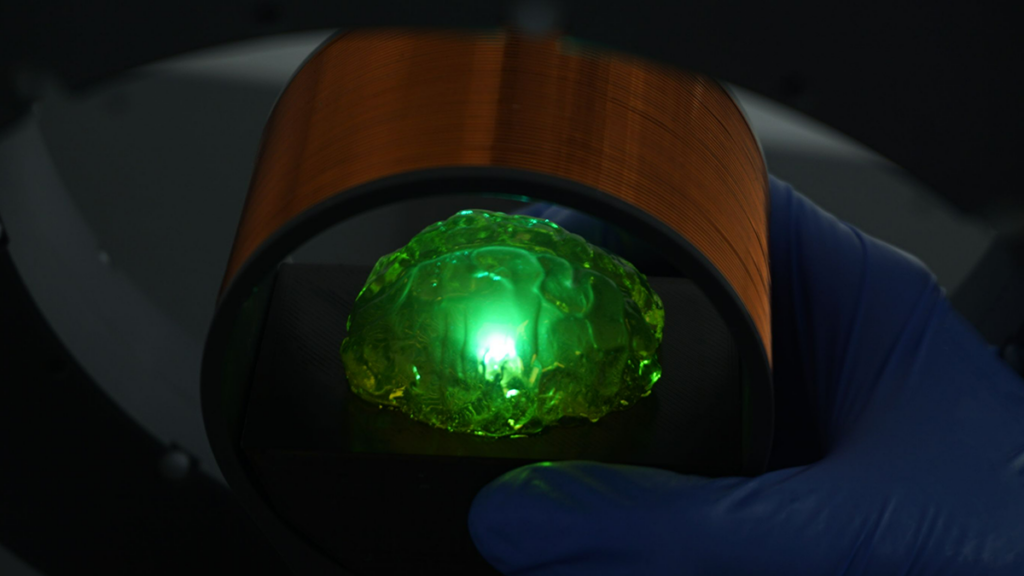Researchers at the University of St Andrews and the University of Cologne have unveiled a platform that paves the way for the implementation of diminutive wireless light sources within the human body.
This development, detailed in the journal Science Advances, heralds a new era of minimally invasive treatments and deeper insights into diseases that traditionally necessitated the insertion of cumbersome devices.
The significance of biomedical implants in revolutionising healthcare is unparalleled, offering transformative treatments for countless individuals. Existing electrode-based implants, such as cochlear implants, cardiac pacemakers, and brain stimulators, leverage the electrical excitability of human cells to restore hearing, regulate heart function, and alleviate symptoms of severe conditions like Parkinson’s disease.
The innovative strategy adopted by the teams from Germany and Scotland involves the integration of organic light-emitting diodes (OLEDs) with acoustic antennas. OLED technology, a staple in contemporary smartphones and premium televisions, features thin organic material layers that can be applied to virtually any surface. Professor Malte Gather, the study’s lead researcher, elucidated: “We have exploited this property to deposit OLEDs directly on the acoustic antenna, thus merging the unique properties of both platforms into a single, extremely compact device.”
Unlike traditional devices that operate at higher frequencies, the newly developed devices work at sub-megahertz frequencies, akin to those used in submarine communications, where electromagnetic fields are minimally absorbed by water. This innovative application in biomedicine necessitates a small device footprint, making conventional antennas impractical at these frequencies.
Julian Butscher, a key contributor to the device’s development during his PhD, stated: “Unlike a classical antenna, an acoustic antenna can be very small, even when harvesting energy from a low frequency electromagnetic field.”
This technology focuses on optical stimulation, an emerging and promising alternative to electrical stimulation, offering greater cell specificity and the potential to target individual cells through genetic modification. Early clinical trials have already demonstrated the potential of such techniques, notably in treating certain untreatable eye diseases.
The quest for the ‘ideal stimulator’ envisions tiny, distributed devices capable of independent operation and wireless control within the body, thus eliminating the necessity for invasive wiring. This concept, which contrasts with the electrode-heavy designs of current brain stimulators like those developed by Neuralink, could revolutionise the treatment of complex neurological disorders by allowing for the separate control of multiple stimulators.
The unique characteristic of both classical and acoustic antennas, where size determines operational frequency, facilitates the independent operation of multiple miniature light sources by varying antenna sizes to tune to different frequencies.
Professor Gather is optimistic about the future: “As a next step, we will work to further reduce the size of our wireless OLEDs and test our technology in an animal model,” indicating the ongoing commitment to refining this innovative approach towards the development of the ultimate stimulator.
